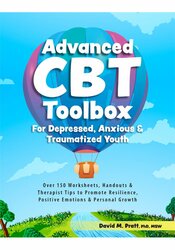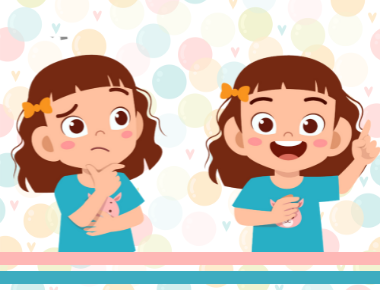Making the Most Informed Choice: The SODAS Problem-Solving Model
Free exercise to aid young clients in decision making

Using a problem-solving paradigm called SODAS, which stands for Situation, Options, Disadvantages, Advantages, and Select the best option, your client will brainstorm different ways to solve a problem, identify the disadvantages and advantages of each option, and select the best option to implement it in their life to see how it works.
Considering each section of SODAS is essential for the client to make the most informed choice:
- Situation: What’s the problem? Be specific. Who is upset with whom and why? What’s the problem that’s going on? Who’s involved? How is it a problem for you?
- Options: Brainstorm two or three different options. There’s no such thing as a bad option when you are brainstorming options, so don’t hold back any options. Also, there’s always more than one option, so think of two or three options.
- Disadvantages: Every option has at least one disadvantage. It’s a good idea to think about the disadvantages of every option before you decide what to do. Identify one to three disadvantages for each option.
- Advantages: There’s also at least one advantage to every option. Identify one to three advantages for every option.
- Select One: After you’ve brainstormed several options and thought about the advantages and disadvantages of each one, select the option you think is the best. It’s up to you. There’s usually no perfect answer, so you just have to think it through and make the best selection you can. Then try it out and see how it goes. You can always use the SODAS method again if the option you selected doesn’t work out.
I have discovered certain sacrosanct ground rules that are essential to adhere to in order for SODAS problem-solving to go well. It is critical that you discuss these ground rules prior to engaging in problem-solving in order to achieve maximum benefit from this exercise. Failure to do this beforehand will make it much harder to correct clients who violate one of the rules after the process has been initiated.
Ground Rule #1: There Is No Such Thing as a Bad Option When Brainstorming Options
Help your client understand that brainstorming means to think creatively without any restrictions. You want your client to think outside the box, since their previous solutions have not yielded the desired results. This ground rule also establishes that there are no absolute right or wrong answers and that you will not censure or object to any option the client identifies while brainstorming options. This is essential if you want to maintain your client’s trust and engage in constructive problem-solving. Although you may be very tempted to dissuade your client from choosing an option that could lead to a negative outcome, resist the urge to do so.
For example, your client may say they’re likely to hit another child who teases them in school. If you attempt to deter your client from even identifying this as an option, then you have defeated the purpose of the exercise and may have caused your client to see you as judgmental and controlling, like they view other adults in their life. Rest assured that this controversial option will not go unchallenged—the next phase of SODAS is to review the advantages and disadvantages of each option. Therefore, the potential negative consequences of assaulting a peer will be addressed.
Ground Rule #2: There Are Always at Least Two Options for Every Problem Situation
Preferably, your client should identify three to four options, but two is the minimum. Sometimes kids balk when asked to identify more than one option. Continuing with the previous example, your client may want to sit on their preferred option of hitting the child who teases them and resist exploring any other potential options. This would obviously be a mistake.
If your client is reluctant to identify more than one option, simply remind them of this agreed-upon ground rule, and gently nudge them toward identifying further options. You’ll be surprised how fair-minded and cooperative kids are when reminded of this ground rule. I have never had a young client refuse to identify a second option when I remind them of this ground rule they agreed to before the exercise.
Ground Rule #3: There Must Be at Least One Advantage and One Disadvantage to Every Option
Continuing with the previous example, it is apparent that we don’t want to accept the client’s position that there is no disadvantage to hitting another child. Similarly, there must always be at least one advantage to every option. For example, we would want the client to explore the potential advantages of standing up to their peer and setting healthy boundaries, even if the client contends there is no apparent advantage to doing so.
Ground Rule #4: The Client Always Gets to Select Their Preferred Option
This is crucial because one of the prime objectives of the exercise is for kids to get experience with making independent decisions and seeing how they go. You will undermine this goal if you attempt to sway your client’s final decision. This is not to say that you don’t play a critical role in helping your client assess the relative disadvantages and advantages of the various options. Indeed, you should facilitate a thorough and balanced pros-cons analysis, but you should refrain from determining what the “right” selection is and leave the final decision up to the child. To reassure any skeptics regarding this issue, I have yet to see a kid choose a clearly unhealthy option when using the SODAS method as recommended here.
Invite your client to do an experiment by applying their chosen solution in real life to see how it works out. Then remember to ask them how the experiment worked out in your next meeting. If the experiment proves unsuccessful, you can use SODAS problem-solving to identify a better option for a secondary experiment.
It is often helpful to practice using the SODAS method on a hypothetical situation prior to applying it to a real problem in your client’s life. Use with your own clients to practice making independent decisions with careful consideration.
You can find these exercises and many more CBT-based activities and handouts for clients and caregivers in my new book, .

Based on Dr. Pratt’s 40+ years of clinical experience, these actionable, youth-friendly worksheets and handouts will help your clients become more resilient, optimistic, and fully alive. Each activity is accompanied by a therapist rationale explaining the evidence base and clinical foundation underlying the intervention, as well as therapist tips for successful implementation.
This new, advanced book contains more than 150 structured activities and therapist tips that are ready for in-session or homework use. These tools will help you teach a variety of skills that are essential for kids’ growth and happiness
Dr. Pratt has conducted numerous trainings in Cognitive Behavioral Therapy at local, state, national and international forums. He is the author of CBT Toolkit for Depressed, Anxious and Suicidal Children and Adolescents (∞≈¿÷ ”∆µ Publishing, Inc., 2019) and Advanced CBT Toolbox for Children and Adolescents: Promoting Resilience, Positive Emotions and Personal Growth (in press, ∞≈¿÷ ”∆µ Publishing, Inc.).
Learn more about their educational products, including upcoming live seminars, by clicking here.
Topic: Children & Adolescents | Cognitive Behavioral Therapy (CBT)
Tags: Activity | Advice | Children | How To | Strategies | Success | Teens | Therapy Tools | Tools | Wisdom



